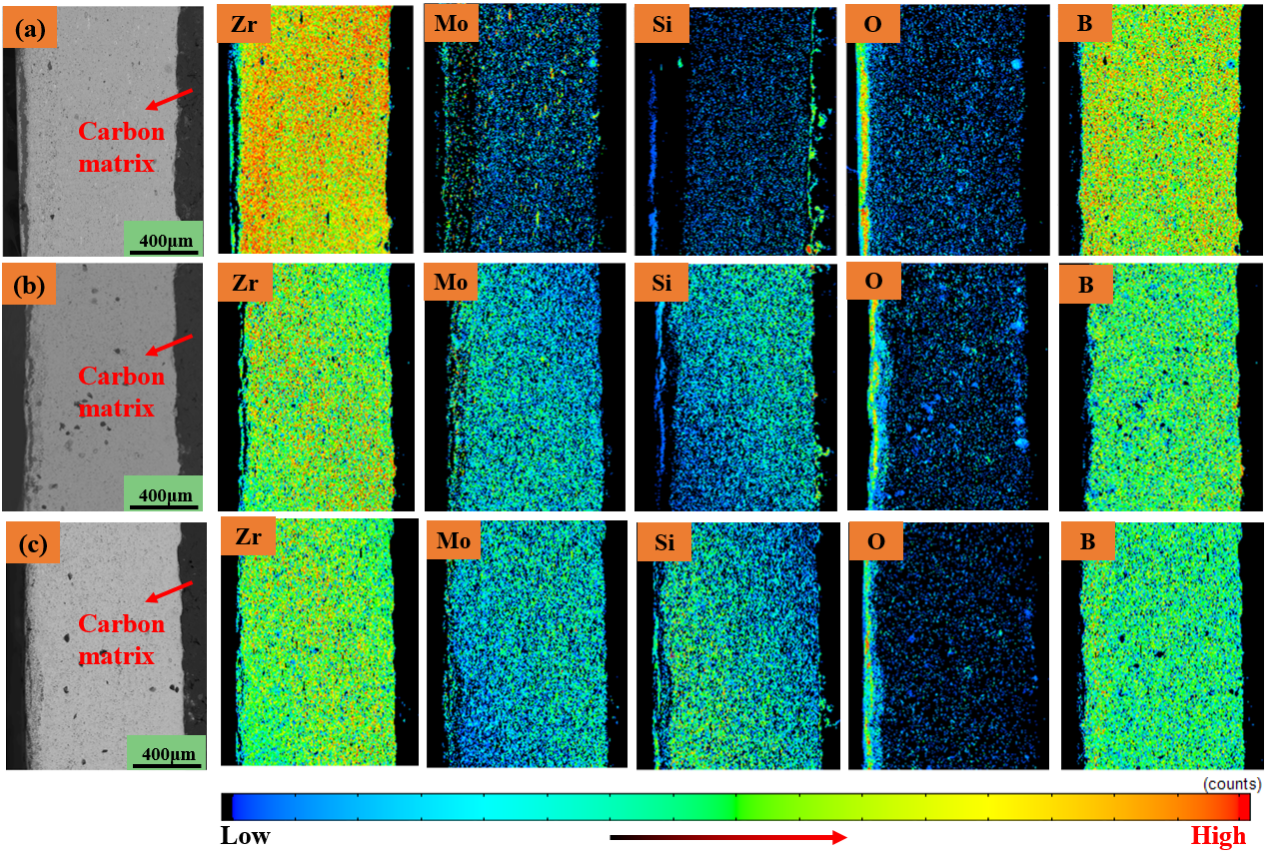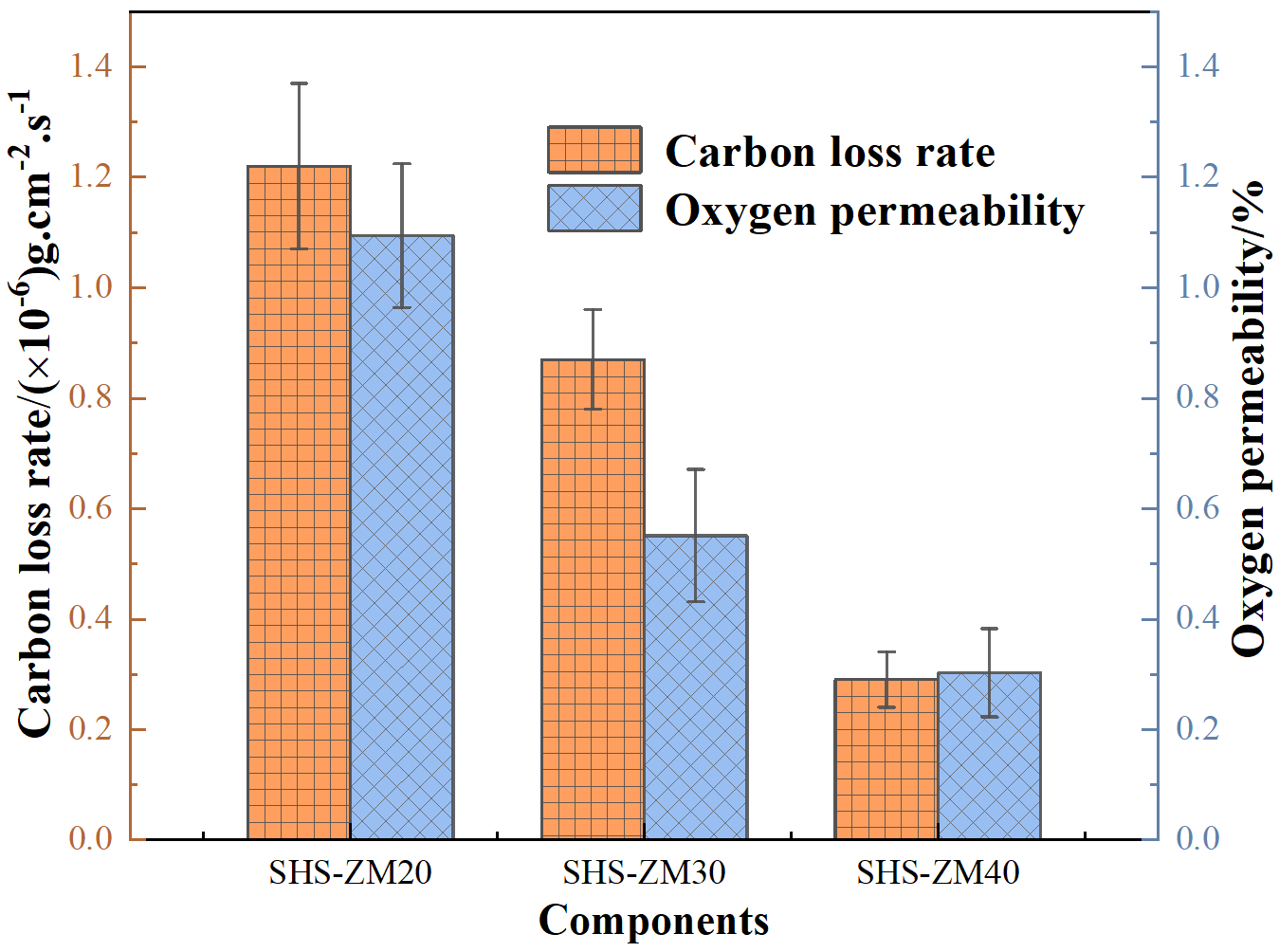congratulations to menglin zhang for his article ‘preparation of zrb2-mosi2 high oxygen resistant coating using nonequilibrium state powders by self-propagating high-temperature synthesis’ published in journal of advanced ceramics.
carbon structural materials are widely exploited in aerospace high temperature components, as indispensable structural materials in the national defense and civil fields, due to the low density, high specific strength, excellent mechanical properties, and decent thermal shock resistance. however, the characteristics of effortless oxidation above 673k prominently constrain the application of carbon structural materials. therefore, coating technology develops the best choice to heighten the high temperature performance of carbon structural materials. mosi2, the most commonly used sintering additive, was generally used to increase the compactness of zrb2. utilizing high activity powders to improve the sintering performance is another way to enhance the structural oxygen blocking ability of the coatings. recently, self-propagating high temperature synthesis (shs) method has been widely exploited in the preparation of composite, which has superior heating and cooling rates, being conducive to generate high activity due to the concentration of defects and non-equilibrium phases in the products.
although the combination of sps and shs methods to prepare zrb2-mosi2 high oxygen resistant coating exhibits much potential, about which little work has been reported. furthermore, the inhibition mechanism of the zrb2-mosi2 coating for penetration of oxygen is still not clear, which can be used to fundamentally regulate the coating structure to obtain better oxygen blocking effect. therefore, in this paper, zrb2-mosi2 composite powders were first prepared by shs technique, using which zrb2-mosi2 coatings were prepared on graphite matrix by sps technique. to avoid the interference of matrix oxidation consumption and reflect the authentic law of protection of the zrb2-mosi2 coatings, graphite samples, coating standard samples and coating samples were prepared simultaneously. furthermore, the oxygen blocking ability of the zrb2-mosi2 coatings prepared by shs and commercial powders (cp) were quantitatively compared at 1973 k. the microstructure and forming mechanism of the self-generated compound glass layer were also further analyzed.
relevant research results were published in the journal of advanced ceramics (if=6.707) with the title " preparation of zrb2-mosi2 high oxygen resistant coating using nonequilibrium state powders by self-propagating high-temperature synthesis".

plenty of zrsio4 and zro2 are precipitated from the high content of zrb2, the low content of silicide leads to the insufficient supply of sio2 glass on the surface, and the oxide particles cannot be homogeneously dispersed, resulting in the oxide agglomeration.however, the surface of the zm40 coating sample tends to be flat, without obvious holes and cracks. with the increase of mosi2 content, the oxygen diffusion rate of oxidation product sio2 is relatively low. at the ultra-high temperature of 1973 k, the pores caused by gas by-products are continuously filled with sio2. therefore, there is no obvious aggregation of zr-oxides and mo-oxides on the surface.

figure 1 surface sem and eds spectra of the coating sample after 1973k oxidation for 100min,(a)-(b)zm20,(c)-(d)zm30,(e)-(f)zm40
the interior of the coating is still dominated by zrb2, and there are no penetrating cracks or large holes, indicating that the three coating samples of zm20-zm40 display excellent effects of blocking oxygen penetration at 1973 k. however, an interesting phenomenon is likewise discovered in the spectra of si element, that is, all coating samples have the absence of si elements under the glass layer, which is called si-depleted layer. the same as the pure ceramic sample, in the interior of the coating samples, the o element penetration of the shs-zm20 component is supreme, which further verifies that the oxidation pores formed by high content of boride will turn into the channel of oxygen diffusion, resulting in generous oxygen penetration.

figure 2 cross-section epma micrographs of shs coating samples after oxidation at 1973 k for 100 min: (a) shs-zm20, (b) shs-zm30, and (c) shs-zm40.
the oxygen permeability and carbon loss rate of the cp coating samples are higher than the corresponding shs coating samples. furthermore, compared with shs-zm20 and shs-zm30, the carbon loss rate of shs-zm40 decreased by 76.2% and 66.7%, and the oxygen permeability decreased by 72.5% and 45.5%, respectively. this proves that the 60 vol%zrb2-40 vol%mosi2 composite powders synthesized by shs technique, after preparation of the coating, have decent resistance at 1973 k due to their lower oxidation activity and excellent structural stability.

figure 3 carbon loss rate–oxygen permeability curve of shs and cp coating samples after oxidation at 1973 k for 100 min.
paper title: preparation of zrb2–mosi2 high oxygen resistant coating using nonequilibrium state powders by self-propagating high-temperature synthesis
the authors: menglin zhang, xuanru ren* , mingcheng zhang, songsong wang, li wang, qingqing yang, hongao chu, peizhong feng*
link: https://link.springer.com/article/10.1007/s40145-021-0485-y
doi:https://doi.org/10.1007/s40145-021-0485-y
if you want to get the full pdf version, please contact:zml13852151005@163.com


